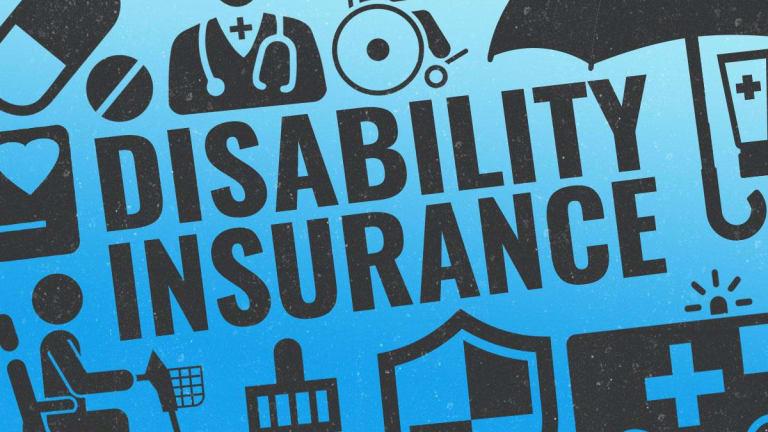When life takes an unexpected turn, the financial repercussions can be overwhelming. Whether due to an accident, illness, or chronic condition, the inability to work can significantly impact one’s financial stability and quality of life. This is where disability insurance comes into play—acting as a safety net for individuals who find themselves unable to earn an income due to unforeseen circumstances. In this article, we will delve into the fundamental aspects of disability insurance, explore its various types, and discuss why it is an essential component of a comprehensive financial plan. By understanding how disability insurance operates and the benefits it offers, you can make informed decisions to protect yourself and your loved ones in times of need.
Table of Contents
- The Basics of Disability Insurance and Its Importance
- Types of Disability Insurance: Choosing the Right Coverage for You
- Key Factors to Consider When Assessing Your Disability Insurance Needs
- Maximizing Your Benefits: Tips for Effective Disability Insurance Claims
- To Wrap It Up
The Basics of Disability Insurance and Its Importance

Disability insurance is a type of coverage designed to provide financial support to individuals who are unable to work due to illness or injury. Unlike health insurance, which typically covers medical expenses, disability insurance replaces a portion of your income, offering much-needed financial stability during unexpected circumstances. This type of insurance serves as a safety net, ensuring that you can continue to meet your monthly obligations—such as rent, mortgages, and groceries—while you focus on recovery. It is crucial for anyone who relies on their income to maintain their lifestyle, particularly those with dependents or significant financial responsibilities.
The importance of disability insurance cannot be overstated. Many people underestimate their risk of becoming disabled, yet statistics show that a significant portion of the workforce may face a disability at some point in their careers. Consider the following points:
- Income Protection: It protects a substantial part of your monthly income.
- Peace of Mind: Enjoy greater peace of mind knowing that you’ll have support during tough times.
- Access to Quality Care: It allows you to focus on getting the care you need without financial stress.
- Improved Recovery: Financial relief can contribute to better recovery outcomes.
| Disability Type | Percentage of Employees Affected |
|---|---|
| Musculoskeletal Disorders | 25% |
| Mental Health Issues | 18% |
| Injuries | 15% |
| Chronic Illnesses | 10% |
Types of Disability Insurance: Choosing the Right Coverage for You

Disability insurance can take various forms, each tailored to meet specific needs and circumstances. The primary types include short-term disability insurance, long-term disability insurance, and specialty policies. Short-term disability insurance typically covers a portion of your income for a limited period, usually from a few weeks up to a year, making it ideal for temporary illnesses or injuries. In contrast, long-term disability insurance offers coverage that can last from several months to several years, or even until retirement age for those with chronic conditions or severe disabilities. Specialty policies may include coverage for specific professions, such as those in high-risk fields, or additional riders that offer extra protection for particular situations.
When choosing the right coverage, it’s essential to consider several factors, including your occupation, health status, and financial obligations. Policies differ in terms of benefits, waiting periods, and elimination periods, so understanding these components can significantly impact your decision. Below is a simple comparison of key features to help you evaluate your options:
| Feature | Short-Term Disability | Long-Term Disability |
|---|---|---|
| Coverage Duration | Up to 1 year | Years to retirement |
| Income Replacement | Typically 60%-80% | Varies, often 50%-70% |
| Waiting Period | Days to weeks | 30 days to several months |
Key Factors to Consider When Assessing Your Disability Insurance Needs
When evaluating your requirement for disability insurance, it’s important to examine several key aspects that will directly affect your coverage and peace of mind. Assess your current financial obligations, such as mortgage payments, student loans, and everyday living expenses, to understand how much income you would need to replace if you were unable to work. Additionally, consider your personal and family circumstances, such as dependents and their financial needs, as these factors will influence the amount of coverage necessary to secure your loved ones’ future.
Another crucial element to review is your current and potential future income, including any possible promotions or raises. This can help you gauge how much disability insurance you should secure to maintain your desired lifestyle. Lastly, evaluate the policy options available in the market and the specific definitions of disability that each may offer. Some policies might only provide benefits if you are completely unable to work, while others might allow for partial benefits. Understanding these distinctions will help you make an informed decision about the right coverage for your situation.
Maximizing Your Benefits: Tips for Effective Disability Insurance Claims
Filing a disability insurance claim can often feel overwhelming, but understanding the process is the first step towards effectively maximizing your benefits. Start by ensuring you have all necessary documentation prepared, which often includes medical records, proof of income, and any relevant statements from your healthcare providers. Keep organized records of all your communications and submissions related to your claim. This can significantly assist in clarifying your case and addressing any issues promptly.
Consider leveraging the expertise of professionals, such as a disability insurance attorney or advocate, who can provide valuable insights and guidance throughout the claims process. Here are some strategies to enhance your chance of a successful claim:
- Be honest and accurate: Ensure that all your submissions are truthful and reflect your current condition.
- Document everything: Maintain a detailed journal of your health, treatments, and any limitations you experience.
- Follow up consistently: Don’t hesitate to check your claim status periodically, as this demonstrates your proactive approach.
Lastly, familiarize yourself with your specific policy terms and conditions. Understanding what qualifies as a disabling condition under your plan is crucial. Below is a simple table highlighting common types of disabilities that are often covered by insurance policies:
| Type of Disability | Description |
|---|---|
| Physical Injuries | Injuries resulting from accidents or severe health issues affecting mobility. |
| Mental Health Conditions | Conditions like depression or anxiety that significantly impact daily functioning. |
| Chronic Illnesses | Long-term health issues like arthritis or heart disease that impair work ability. |
To Wrap It Up
understanding the critical role of disability insurance is essential for safeguarding your financial future against unforeseen circumstances. Whether you are a young professional just starting your career or a seasoned individual looking to protect your family’s financial well-being, disability insurance offers peace of mind during uncertain times. As we’ve explored, it’s not just about income replacement; it’s about ensuring that you can maintain your quality of life and fulfill your responsibilities, no matter what challenges may arise.
Taking the time to assess your needs and explore the various options available can lead you to the right policy for your unique situation. Remember, investing in disability insurance is an investment in your future security.
If you haven’t already, consider discussing your options with a financial advisor to help you navigate this important aspect of your financial planning. By understanding and incorporating disability insurance into your comprehensive financial strategy, you can take control of your future—no matter what life may throw your way. Thank you for reading, and here’s to your continued exploration of smart financial choices!



